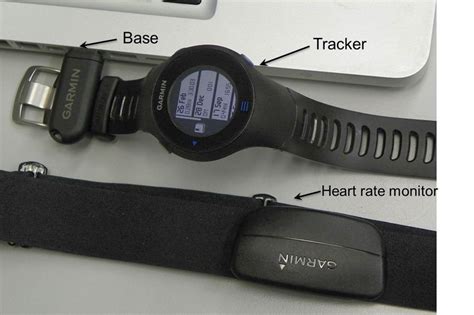How to Recognize Fake Fitbit Fitness Trackers
Fitbit fitness trackers have become incredibly popular for their ability to track activity, sleep, and heart rate. However, the increasing demand for these devices has unfortunately led to a rise in counterfeit products. These fake Fitbits may look similar to the real deal, but they often lack the same accuracy, features, and functionality. If you’re considering buying a Fitbit, it’s crucial to know how to distinguish a genuine tracker from a fake one. This guide will provide you with the essential information to help you make an informed decision and avoid falling victim to counterfeit products.
Recognizing a fake Fitbit can be challenging, especially for those unfamiliar with the genuine product’s features and design. However, by paying attention to certain key aspects, you can significantly reduce the risk of purchasing a counterfeit. This article will discuss the most common signs of a fake Fitbit, enabling you to make a more informed purchase.
What are some of the telltale signs of a fake Fitbit?
Spotting a fake Fitbit can be challenging, but there are specific details to look out for. Counterfeiters often try to mimic the genuine product’s design, but they may fall short in certain areas. Here are some key indicators that can help you distinguish a real Fitbit from a fake one:
- Price: If the price of a Fitbit seems too good to be true, it probably is. Counterfeiters often sell their products at significantly lower prices to entice buyers. Be wary of deals that seem too attractive, and always double-check the price with authorized retailers.
- Packaging: The packaging of a genuine Fitbit is typically high quality and well-designed. Pay attention to the logo, font, and overall presentation. If the packaging looks cheap or poorly printed, it could be a sign of a counterfeit.
- Fitbit logo: The Fitbit logo on genuine products is usually crisp and well-defined. Counterfeiters may have trouble replicating the logo perfectly, resulting in blurry or uneven lettering.
- Color and finish: The color and finish of a genuine Fitbit are consistent and uniform. Fake trackers may have uneven coloration or a less polished appearance.
- Software and functionality: Fake Fitbits may lack certain software features, like GPS or heart rate tracking. They may also be incompatible with the official Fitbit app or have limited data accuracy.
By keeping these telltale signs in mind, you can significantly reduce the chances of purchasing a fake Fitbit. Remember to always buy from reputable sellers and be cautious of deals that seem too good to be true. If you’re unsure about the authenticity of a Fitbit, it’s best to consult with a reliable retailer or the Fitbit support team.
![]()
How can I be sure I’m getting a real Fitbit?
When buying a Fitbit, it’s crucial to ensure you’re getting an authentic device. Fake Fitbits may look similar, but they often lack the accuracy, features, and functionality of genuine trackers. Fortunately, several strategies can help you verify the authenticity of your purchase.
- Buy from authorized retailers: The most reliable way to guarantee a genuine Fitbit is to buy from authorized retailers, such as the Fitbit website, major online retailers, and reputable electronics stores. These retailers are verified and have a vested interest in selling authentic products.
- Check the product serial number: Every genuine Fitbit has a unique serial number. You can verify the serial number on the Fitbit website or through the Fitbit app to confirm its authenticity.
- Examine the packaging and accessories: The packaging of a genuine Fitbit is typically high quality and includes all the necessary accessories, such as a charging cable and instructions. Counterfeiters may use low-quality packaging or missing accessories.
- Read reviews and compare prices: Before purchasing a Fitbit, read reviews from other customers and compare prices across different retailers. This can help you identify potential fake sellers or suspiciously low prices.
- Contact Fitbit support: If you have any doubts about the authenticity of a Fitbit, you can contact Fitbit support directly for assistance. They can verify the serial number and provide information about the specific model.
Following these steps can significantly reduce the risk of purchasing a fake Fitbit. Always be cautious and thorough when buying a new fitness tracker, and don’t hesitate to verify the authenticity of your purchase before finalizing the transaction.
How can I tell if a Fitbit is fake by looking at the hardware?
When buying a Fitbit, it’s important to be able to distinguish between a genuine device and a fake one. While counterfeiters have become increasingly skilled at replicating the appearance of real Fitbits, there are still several telltale signs to look for in the hardware. Carefully examining the physical aspects of the tracker can provide valuable insights into its authenticity.
- Build quality and materials: Genuine Fitbits are known for their quality construction and premium materials. Feel the weight and texture of the device; fake Fitbits may feel lighter, cheaper, or have a less polished finish. Pay attention to the buttons, screen, and overall design; they should feel sturdy and well-assembled.
- Screen resolution and clarity: The screen on a genuine Fitbit is typically crisp, clear, and easy to read. Counterfeit devices may have lower resolution screens, resulting in blurry text or pixelated images.
- Charging port: The charging port on a genuine Fitbit is typically well-defined and properly aligned. Fake Fitbits may have misaligned or poorly constructed ports, which can make charging difficult or impossible.
- Fitbit logo: The Fitbit logo on a genuine device is usually crisp and well-defined. Counterfeiters may have trouble replicating the logo perfectly, resulting in blurry or uneven lettering. Additionally, ensure the logo’s color matches the genuine product’s color.
- Sensors: While difficult to examine visually, some fake Fitbits may lack essential sensors, such as a heart rate sensor or an accelerometer. If the device seems to be missing sensors advertised in the product description, it could be a fake.
By thoroughly inspecting the hardware of a Fitbit, you can identify several key indicators of authenticity. If you notice any discrepancies or inconsistencies in the build quality, materials, screen, or charging port, it’s best to err on the side of caution and avoid the purchase.

What are the consequences of buying a fake Fitbit?
While the allure of a cheap Fitbit may be tempting, it’s crucial to understand the potential consequences of buying a fake device. These counterfeit products can have several drawbacks that could ultimately lead to a frustrating and disappointing experience.
- Inaccurate data: One of the primary purposes of a fitness tracker is to provide accurate data on your activity, sleep, and heart rate. Fake Fitbits often lack the necessary sensors and software to deliver reliable data, which can be misleading and potentially harmful to your health and fitness goals.
- Limited functionality: Counterfeit Fitbits may lack features found in genuine devices, such as GPS tracking, heart rate monitoring, or smartphone notifications. This can limit the tracker’s overall functionality and make it less effective.
- Security risks: Fake Fitbits may have security vulnerabilities that could expose your personal data to unauthorized access. Counterfeiters often use low-quality software and components, increasing the risk of data breaches and privacy violations.
- No warranty or support: Genuine Fitbit devices come with a warranty and access to customer support. Counterfeit trackers typically lack any warranty or support, leaving you with no recourse if the device malfunctions or stops working.
- Ethical concerns: Buying fake Fitbits contributes to counterfeit markets that undermine legitimate businesses and infringe on intellectual property rights.
Therefore, it’s essential to prioritize buying genuine Fitbits to ensure accurate data, reliable functionality, security, and customer support. The consequences of purchasing a fake device can outweigh the potential savings, leaving you with a product that is unreliable, potentially unsafe, and unsupported.
What should I do if I think I bought a fake Fitbit?
If you suspect you’ve purchased a fake Fitbit, it’s important to take action to protect yourself and avoid further problems. Here are some steps you can take:
- Contact the seller: Inform the seller about your concerns and request a refund or exchange. Provide evidence of the product’s suspected counterfeit nature, such as photos or descriptions of inconsistencies.
- Report the seller: If the seller refuses to cooperate or if you purchased the device from an online marketplace, report the seller to the platform. Many platforms have mechanisms for reporting suspected counterfeit sellers.
- Contact Fitbit support: Fitbit support can help verify the authenticity of the device and provide guidance on further actions. They can also inform you about potential security risks associated with using a counterfeit tracker.
- Dispose of the fake device responsibly: If you cannot return the fake Fitbit, dispose of it responsibly to avoid potential security risks. Never attempt to repair or modify the device yourself.
By taking these steps, you can minimize the potential risks and consequences of buying a fake Fitbit. It’s essential to act promptly and take proactive measures to ensure your safety and protect your investment.
What are some tips for finding a genuine Fitbit?
Finding a genuine Fitbit can be easier with a few helpful tips and strategies. By taking extra care during your purchase process, you can increase your chances of acquiring a genuine and trustworthy fitness tracker.
- Research authorized retailers: Before making a purchase, research authorized Fitbit retailers. Look for reputable online stores, electronics retailers, and the official Fitbit website. Check their online reviews and customer feedback to ensure their authenticity.
- Compare prices across multiple retailers: Avoid excessively low prices, which often signal counterfeit products. Compare prices from different reputable retailers to get an idea of the fair market value for the specific model you’re interested in.
- Read customer reviews: Before buying, read customer reviews from other users who have purchased the same model from the retailer. Pay attention to reviews mentioning product authenticity, functionality, and customer service.
- Verify the seller’s legitimacy: If buying from an online marketplace, verify the seller’s legitimacy. Look for their seller rating, customer reviews, and feedback. Avoid sellers with low ratings or suspicious activity.
- Be wary of unauthorized sellers: Be cautious of sellers on social media platforms or other untrusted websites. Stick to authorized retailers and avoid making purchases from unknown sources.
By following these tips, you can increase your chances of finding a genuine Fitbit and ensuring a positive and reliable experience. Remember to always be cautious, do your research, and buy from reputable sources to avoid the risks associated with counterfeit products.
What is the best way to spot a fake Fitbit?
While various methods can help you distinguish a genuine Fitbit from a fake one, the best approach is to consider a combination of factors. Pay close attention to the device’s physical characteristics, packaging, price, and source. Be wary of any inconsistencies or red flags that may indicate a counterfeit.
- Visual inspection: Carefully inspect the device’s build quality, materials, and design. Check for any imperfections, misaligned components, or cheap materials. Look for a crisp and well-defined Fitbit logo, consistent color, and a polished finish.
- Packaging and accessories: Examine the packaging for signs of authenticity, such as high-quality printing, a clear Fitbit logo, and all necessary accessories. Counterfeit packaging is often poorly made, with faded colors or missing components.
- Price comparison: Research the recommended retail price for the specific model you’re interested in. Be wary of suspiciously low prices that may indicate a fake product. Compare prices from multiple reputable retailers to get a sense of the fair market value.
- Source verification: Buy from authorized retailers, such as the Fitbit website, major online retailers, and reputable electronics stores. Avoid purchasing from suspicious websites or unauthorized sellers.
- Contact Fitbit support: If you’re unsure about the authenticity of a device, contact Fitbit support for assistance. They can verify the serial number and provide information about the specific model.
By combining these methods, you can increase your chances of spotting a fake Fitbit and ensuring you purchase a genuine and reliable fitness tracker.
Are fake Fitbits dangerous?
While fake Fitbits might not pose an immediate physical danger, there are several potential risks and downsides associated with using them:
- Inaccurate data: Fake Fitbits often lack the necessary sensors and software to provide accurate data on your activity, sleep, and heart rate. This can lead to misleading information, potentially affecting your health and fitness goals.
- Security risks: Fake Fitbits may have security vulnerabilities that could expose your personal data to unauthorized access. Counterfeiters often use low-quality software and components, increasing the risk of data breaches and privacy violations.
- Limited functionality: Fake Fitbits may lack features found in genuine devices, such as GPS tracking, heart rate monitoring, or smartphone notifications. This can limit the tracker’s overall functionality and make it less effective.
Therefore, while fake Fitbits may not pose a direct physical threat, using them can lead to inaccurate data, security risks, and limited functionality. It’s best to avoid using counterfeit trackers to ensure your safety and protect your privacy.
What if I bought a fake Fitbit and it stopped working?
If you purchased a fake Fitbit and it stopped working, you are likely out of luck. Counterfeit products typically lack any warranty or customer support, leaving you with no recourse if the device malfunctions or stops working. This highlights the importance of buying from authorized retailers and ensuring the authenticity of your purchase before finalizing the transaction.
While it’s frustrating to deal with a faulty fake product, it serves as a valuable lesson to prioritize buying genuine devices from reputable sources. Remember, the potential savings from buying a counterfeit product can be outweighed by the lack of warranty, support, and the risk of inaccurate data and security vulnerabilities.
What are some alternatives to Fitbit if I’m worried about buying a fake?
If you’re hesitant about purchasing a Fitbit due to concerns about counterfeits, several reputable alternatives offer similar features and functionality. Consider exploring these options:
- Garmin: Garmin offers a wide range of fitness trackers and smartwatches known for their accuracy, durability, and feature-rich capabilities.
- Polar: Polar is a renowned brand specializing in heart rate monitors and fitness trackers. They offer accurate data and advanced features for athletes and fitness enthusiasts.
- Apple Watch: Apple Watch is a stylish and feature-packed smartwatch that excels in fitness tracking, health monitoring, and smartwatch capabilities.
- Samsung Galaxy Watch: Samsung Galaxy Watch offers a comprehensive fitness tracking experience, combined with smartwatch functionality and compatibility with Android devices.
These brands offer robust alternatives to Fitbit, ensuring the authenticity of your purchase and access to warranty, support, and reliable data. Choose a brand that aligns with your needs, budget, and preferred features.
![]()
Table Summarizing Information
| Telltale Sign | Genuine Fitbit | Fake Fitbit |
|---|---|---|
| Price | Fair market price, competitive with authorized retailers | Significantly lower than genuine Fitbits |
| Packaging | High-quality packaging, well-designed logo, clear font | Cheap or poorly printed packaging, unclear logo |
| Fitbit logo | Crisp, well-defined logo, consistent color | Blurry, uneven, or inconsistent logo |
| Color and finish | Consistent and uniform color and finish | Uneven coloration, less polished appearance |
| Software and functionality | Complete functionality, compatible with Fitbit app | Limited features, incompatible with Fitbit app |
| Build quality and materials | Premium materials, sturdy construction | Lighter, cheaper materials, less polished finish |
| Screen resolution and clarity | Crisp, clear screen, easy to read | Low resolution, blurry text, pixelated images |
| Charging port | Well-defined, properly aligned port | Misaligned or poorly constructed port |
| Sensors | Includes all advertised sensors, such as heart rate and accelerometer | May lack essential sensors, affecting data accuracy |
| Warranty and support | Full warranty and access to customer support | No warranty or support, limited recourse for issues |
FAQ
Here are some frequently asked questions about recognizing fake Fitbits:
Can I return a fake Fitbit if I bought it online?
It depends on the seller and the platform you purchased it from. Some online marketplaces have policies protecting buyers from counterfeit products, but not all sellers are cooperative or offer refunds. It’s essential to check the platform’s policies and the seller’s return policy before purchasing.
Is it illegal to sell fake Fitbits?
Yes, selling counterfeit products, including fake Fitbits, is illegal and can result in serious consequences, including fines and legal penalties. Counterfeiting infringes on intellectual property rights and undermines legitimate businesses.
What are the benefits of buying a genuine Fitbit?
Buying a genuine Fitbit offers several benefits, including accurate data, reliable functionality, security, and access to warranty and customer support. These advantages outweigh the potential savings from purchasing a fake product.
Can I check if a Fitbit is genuine by using the Fitbit app?
The Fitbit app itself cannot directly verify the authenticity of a device. However, you can use the app to check the device’s serial number and compare it with the information provided on the Fitbit website.
What should I do if I find a Fitbit at a suspiciously low price?
If you come across a Fitbit at a significantly lower price than the standard retail price, be wary. This could be a sign of a counterfeit product. It’s best to avoid such offers and buy from reputable retailers at fair market prices.
Is it safe to use a fake Fitbit?
While fake Fitbits may not pose an immediate physical threat, they can present security risks, provide inaccurate data, and lack functionality. Using a fake Fitbit can expose your personal information to unauthorized access and lead to misleading health and fitness data.
Where can I find genuine Fitbit products?
To ensure you’re buying a genuine Fitbit, purchase from authorized retailers, such as the Fitbit website, major online retailers, and reputable electronics stores. Avoid purchasing from suspicious websites or unauthorized sellers.


